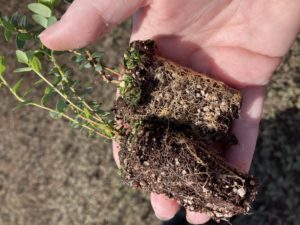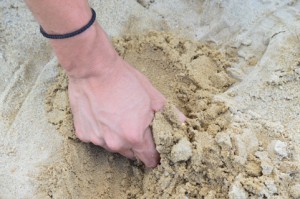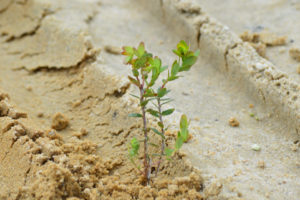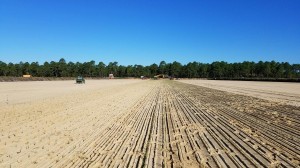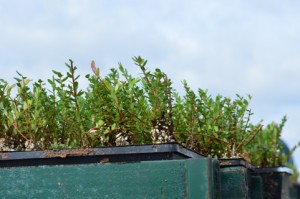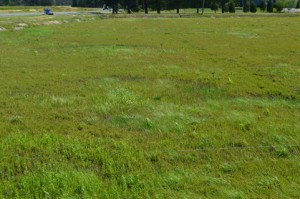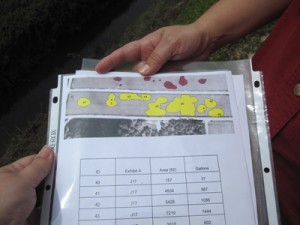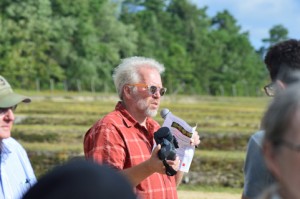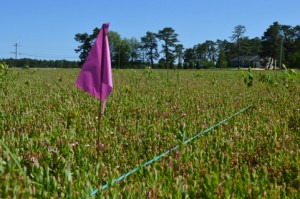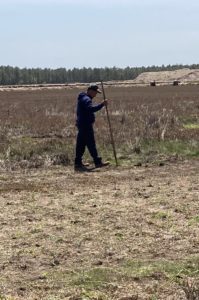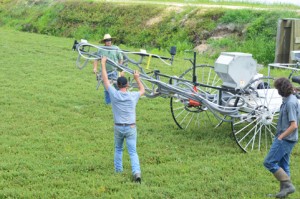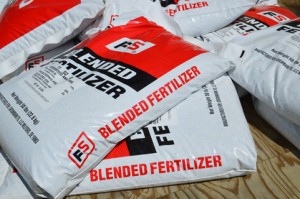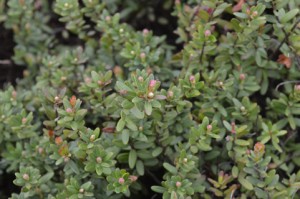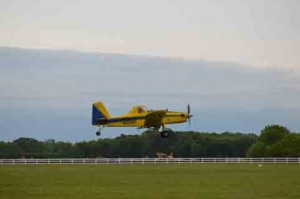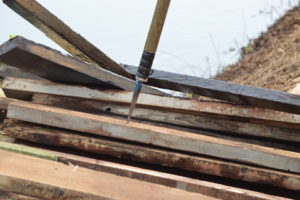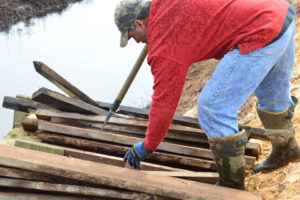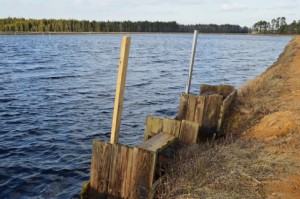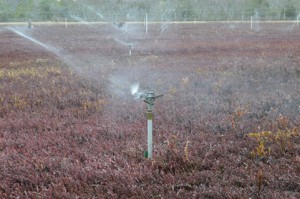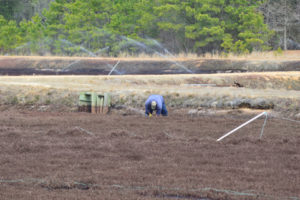A couple of weeks ago our team was replanting some bare patches. This week, they’re hard at work on our renovated acreage!
There are two methods of planting: conventional propagation, which means pressing mowed vines or prunings directly into the bogs to be established; and rooted cuttings, which means planting plants with roots already established. Pine Island has used both methods in the past, but we’ve moved on to using rooted cuttings entirely. Another concern with planting is implementing an irrigation program, both with ground water and sprinklers, that provides moisture for vine growth without causing excessive soil saturation, which can lead to favorable conditions for phytopthora, which in turn can lead to fruit or root rot. Pine Island uses both ditches and sprinklers for irrigation. During the early spring, after the winter flood is removed, irrigation is usually covered by our frost protection program. However, concerns for adequate soil moisture should not be forgotten during frost season. Several warm, sunny days without rain or frost irrigation can result in the need for irrigation. Checking the soil yourself is extremely important; tensiometers are good, but it’s important to learn the hands-on method, as well.
The process remains the same: rooted cuttings are taken from the cart and loaded onto the planter. Team members seated on the planter drop the vines into the carousel and then the vines are distributed into the pre-dug furrow. The planter is followed by other crew members, who make sure that the vines have been placed correctly. Running the planting operation is a true challenge: coordinating everything, getting the right plants at the right time with the right people, constantly adjusting the planters, and identifying problems and how to fix them.
We target our planting for spring to provide more time in the growing season. With the acreage we need to cover (about 50 acres this year) and how the timing coincides with very busy times on the farm we work hard to balance all resources.
This year we planted our renovated acreage at Sim Place with Demoranville and the new bogs at the home farm with Haines, both of which have been yielding good results for us.

